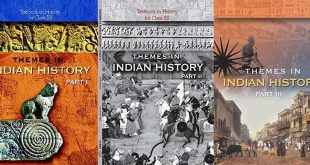Question: ‘The system of subsidiary Alliance was meant to create dependable and dependent Indian rulers’. Explain.
Answer: Subsidiary Alliance was a very clever trick played by the Britishers to take advantage of rivalries amongst Indian rulers. They asked the rulers to sign a subsidiary treaty. In return they protected the rulers from internal rebellions and from attacks of his rivals. If the ruler signed the treaty, then he would have to agree to the following conditions:
- He would not keep an army of his own.
- He would have to keep a British army for his protection and would have to pay it too.
- He would have to take permission from the British before entering into an take permission from the British before entering into an alliance with another ruler or declaring war against another kingdom.
- No, official of any other European power would be allowed in the court. A British officer called ‘Resident’ would be stationed at the rulers court.
Question: How did Lord Dalhousie expand the British territories in India?
Answer: Lord Dolhousie became Governor – General in 1848. He devised a policy called doctrine of Lapse. According to it, when the ruler of kingdom under British protection died without a natural heir, his territory would pass to the British. He annexed many kingdoms under the Doctrine of Lapse for e.g. – Jhansi, Nagpur, Satara.
Another pretext Dalhousie used to annex territories in India was misgovernment. For e.g. – Nawab Wajid Ali shah of Awadh was accused of misrule and reluctance to introduce reforms. Awadh was annexed in 1856.
Question: How did the British deal with dispensing justice in India?
Answer: Initially Britishers followed the Indian laws based on local customs and traditions to dispense justice. In 1793, the Bengal Revolution came into being and some of the Indian traditions were written down in the from of laws and regulations. Lord Cornwallis and Warren Hastings gave a proper shape to the judicial setup. They set up civil courts (diwani adalat) and criminal court (faujdari adalat) at district level. In 1833 a Law Commission was appointed to codify Indian Laws and complied the Indian Penal Code (IPC) and established the principal of rule of Law. According to IPC ‘Rule of Law’ was supreme, but it was hardly followed.
Question: Why did the authority of the Central Government decline after the death of Aurangzeb?
Answer: After the death of Aurangzeb, the authority of the Central Government or Mughal administration began to decline. Following were the main causes of it:
-
- The Mughal Emperors who came to the throne after the death of Aurangzeb were inefficient in the matters of administration. They were very weak, so they could not retain the empire intact. They went on quarreling with one another in order to ascend the throne but none could get success.
- Degeneration of the Mughal nobility also weakened the empire. The nobles fought to capture the office the wazir to promote the interest of their relatives and followers.
- Aurangzeb’s long warfare in the Deccan caused chaos and confusion in the north. It gave rise in revolts and led to the downfall of the empire.
- Prolonged warfare of Aurangzeb caused loss of men (army), money (government -treasury) and prestige of the empire. Thus he faces financial crisis too.
- The revolts of the Jats, the Sikhs, the Rajputs and the Marathas caused disintegration of the Mughal Empire.
- It was the time when a new power emerging on the political horizon – the British.
 Class Notes NCERT Solutions for CBSE Students
Class Notes NCERT Solutions for CBSE Students




